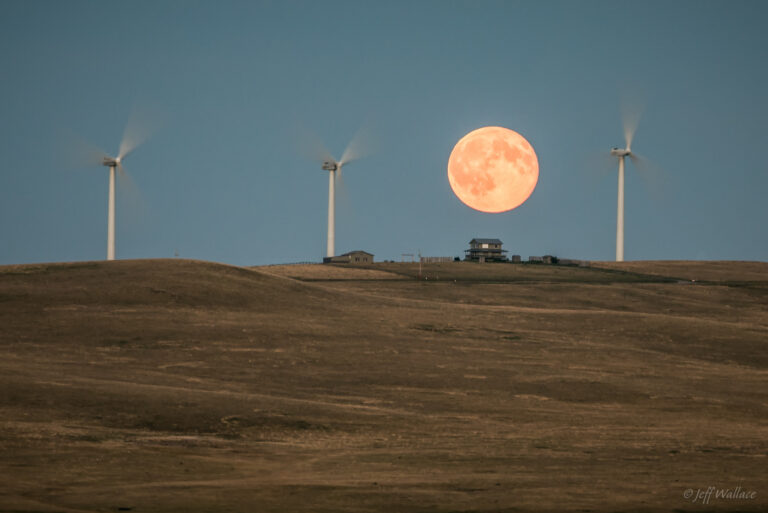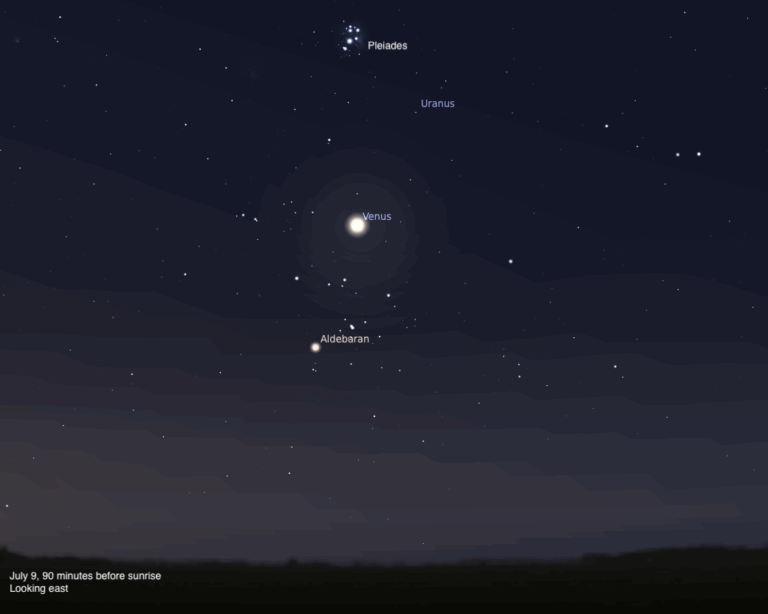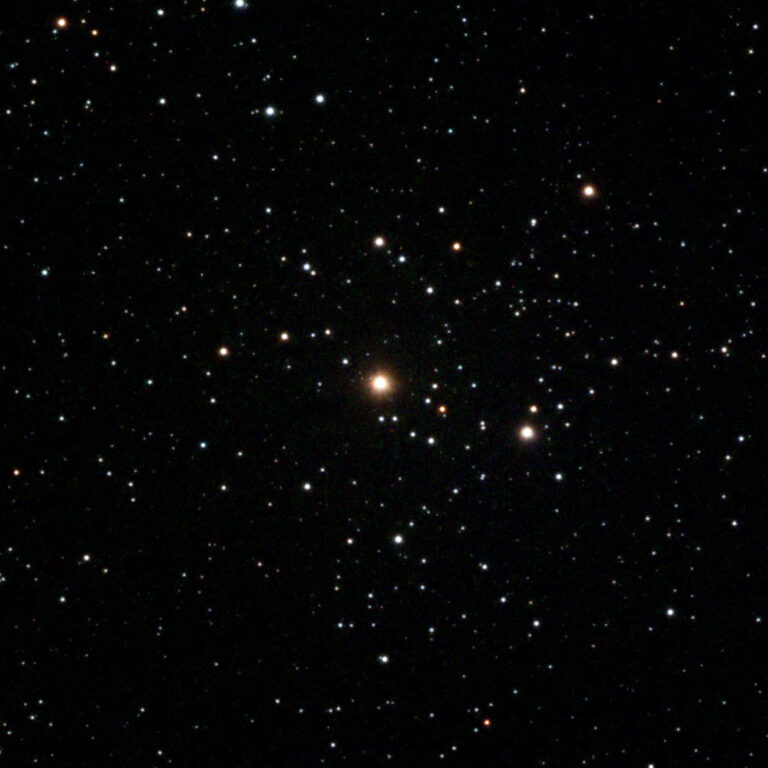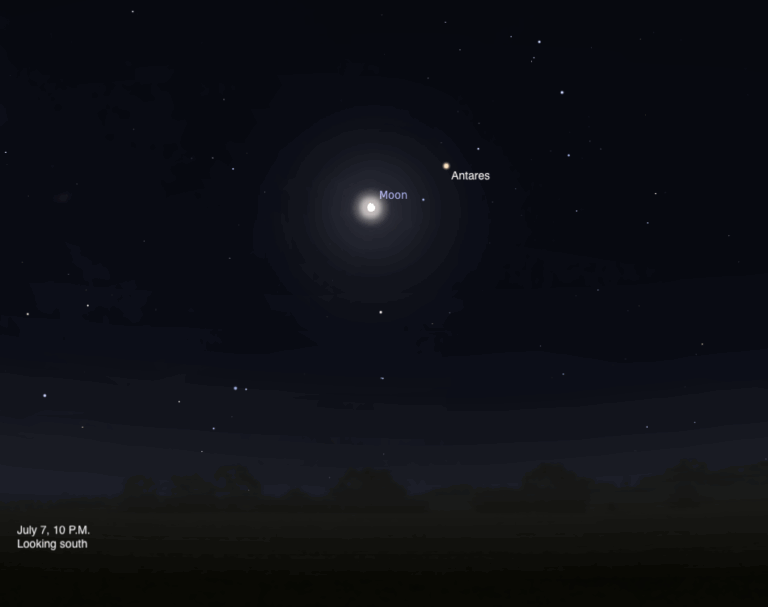Key Takeaways:
Friday, August 13
Although the Perseids peaked yesterday, today is still a great time to catch some of the shower’s plentiful shooting stars. In fact, the Perseids are often considered one of the year’s best meteor showers and, depending on the time and location you step outside to take in the sky, you can expect to see somewhere between about 20 and 90 meteors per hour.
If you do plan to catch the show tonight, wait until the Moon has set (or nearly set) to reduce background light. Choose a comfortable, dark viewing location and look northeast, where the constellation Perseus is rising. The constellation’s brightest star is magnitude 1.8 Mirfak, and the Perseids’ radiant sits about 8° to the upper left (northwest) of this star as they rise. The radiant is much closer — 0.7° north-northwest — to magnitude 4.8 Lambda (λ) Persei.
With the constellation low to the horizon, you’re looking through a significant slice of Earth’s atmosphere and the rate of meteors you’ll see will be lower — closer to 20 per hour. The longer you wait (and as midnight comes and goes, carrying you into August 14), the higher the constellation and the radiant will rise, and so will the number of meteors you see.
While you’re studying this region of sky, turn your gaze to Algol, Perseus’ beta star. This star is actually a special type of binary system called an eclipsing binary, in which one star passes in front of the other from our viewpoint here on Earth. As a result, every 2.867 days, Algol appears to dim from magnitude 2.1 to magnitude 3.4, or 30 percent its normal brightness. The entire process takes just a few hours. When uneclipsed, Algol is comparable in brightness to Mirfak. While hidden by its companion, however, Algol is noticeably dimmer. Which is it tonight?
Sunrise: 6:10 A.M.
Sunset: 7:59 P.M.
Moonrise: 11:35 A.M.
Moonset: 11:00 P.M.
Moon Phase: Waxing crescent (29%)
*Times for sunrise, sunset, moonrise, and moonset are given in local time from 40° N 90° W. The Moon’s illumination is given at 12 P.M. local time from the same location.










